The Indians sharing their villages with crocodiles
- Published
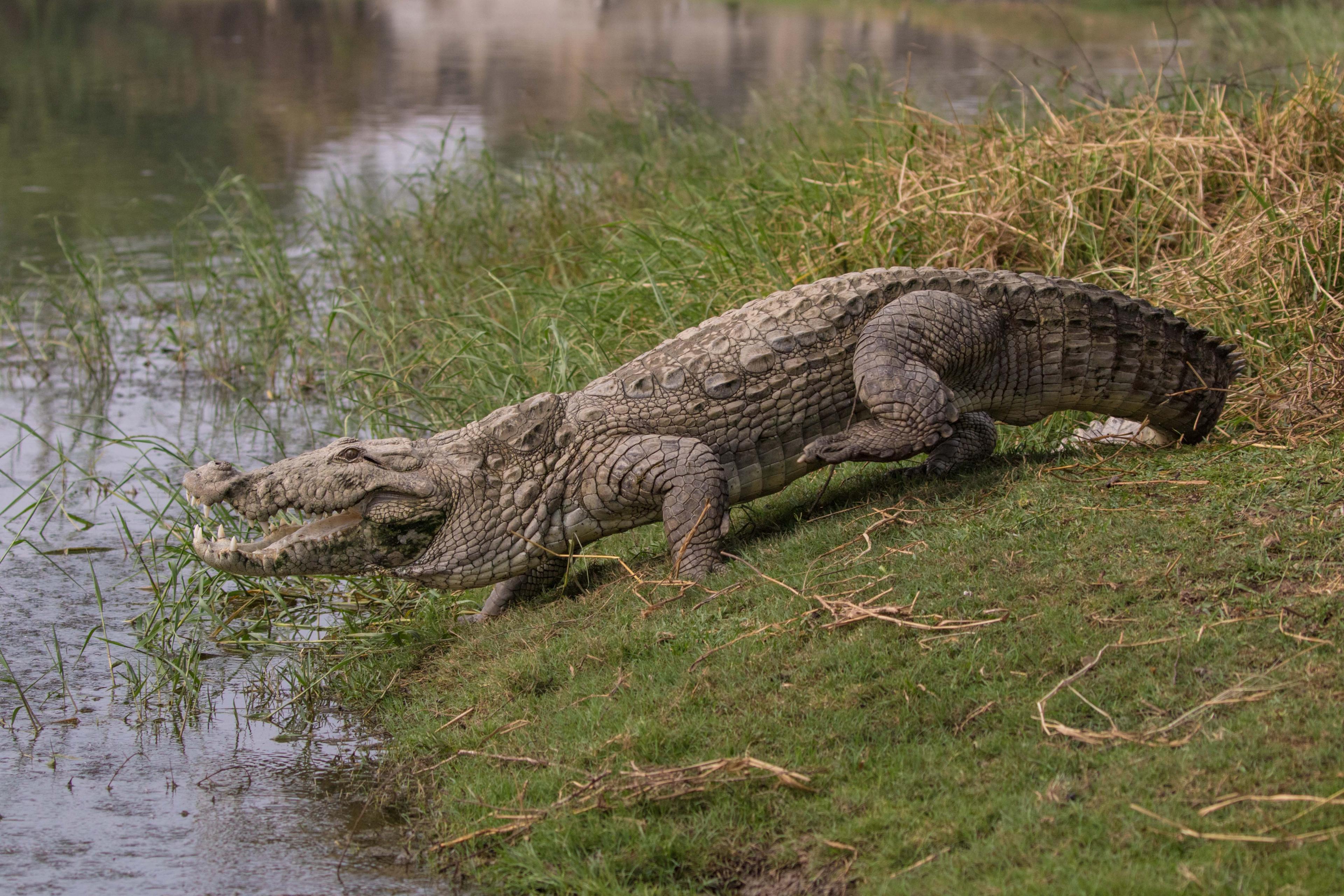
There are about 200 mugger crocodiles in the region
In some villages in India's western state of Gujarat, locals live cheek by jowl with mugger crocodiles, which are considered extremely dangerous. Janaki Lenin visited the area to investigate an unusual coexistence.
"The crocodiles will come out only around 10:00," the woman advised me as she hung up her laundry on a recent winter morning.
I was not on a wildlife safari. I was in the courtyard of her house in Malataj village, scanning the surface of the pond beyond her front door.
It looked like any other pond. But lurking among the fuchsia blossoms and green pads of water lilies were mugger crocodiles, one of India's three crocodilian species. And villagers - such as the housewife speaking to me - know the reptiles' habits from generations of coexisting with them.
In most places, the sight of even a single crocodile would be enough to send locals scurrying in fear. But not in Charotar - a 4,000-sq-km (1,544-sq-mile) area bracketed by the Sabarmati and Mahi rivers in Gujarat.
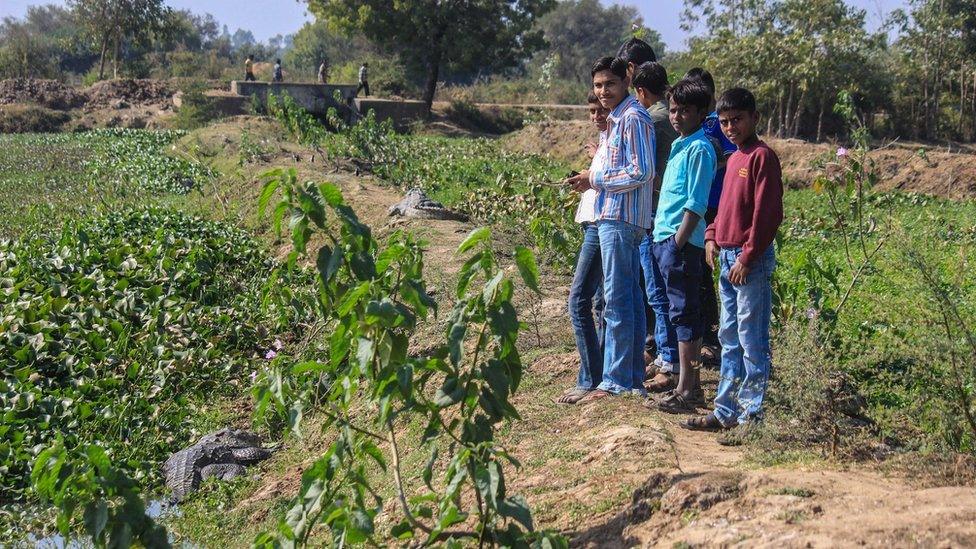
Locals, including children, roam freely alongside the reptiles
There are at least 200 resident mugger crocodiles in some 30 villages in Charotar, according to surveys by the Voluntary Nature Conservancy, a local non-profit group. The region also packs around 600 people per sq km.
Every pond in the area sports a sign warning of mugger crocodiles. But these pools are central to the daily life of villagers. So residents ignore the signs and wade in to swim, bathe, do their laundry, wash their cattle and grow water chestnuts.
The crocodiles, meanwhile, drift in the same ponds, gobbling fish and raising their young. They clamber onto the banks, bask in the sun, sleep and crawl through grass along the same paths where cattle graze and people, including children, walk.
Every day, humans and muggers go about their business without disturbing or even worrying about each other.

What do we know about mugger crocodiles?
Muggers get their name from the Hindi word for crocodile, "maggar mach".
They are a medium-sized crocodile, with adults ranging between three and four metres in length.
Mugger crocodiles used to be widespread throughout the subcontinent. Their population declined steeply through the 1950s and 1960s as hunters targeted them for their skin and meat, and people consumed their eggs.
With conservation efforts, their numbers now range between 3,000 and 4,200 in India. They are also found in Pakistan, Nepal, Sri Lanka, and Iran.

Charotar, which means "pot of gold" in the local language, is named for the bounty that its farmers reap. Fields of tobacco stretch for miles in every direction with no sign of any refuge for wildlife. So, where did the crocodiles come from?
Some say they have always inhabited Charotar. Others claim that the rulers of the Gaekwad dynasty - which ruled the area from the early 18th Century until India's independence in 1947 - released the crocodiles in to these ponds so they could hunt them, but there is no historical evidence that supports this theory. One thing is certain though: the muggers are not recent migrants.
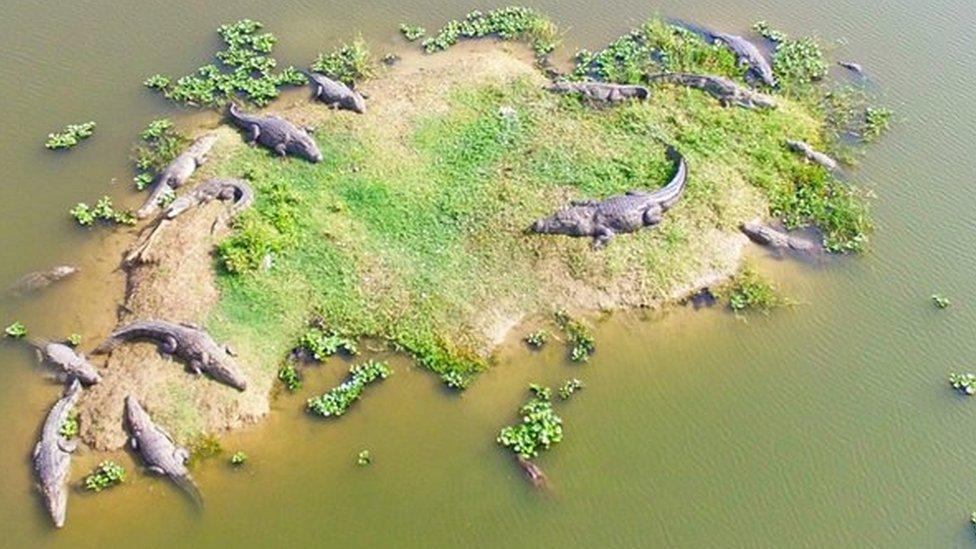
Muggers across the world killed 18 people in 2018
But the behaviour of Charator's muggers is very unusual. Muggers are the third most dangerous crocodile species, external, killing 18 people around the world in 2018, according to CrocBITE, a global database of crocodile attacks. About 40km (25 miles) from Charotar, for instance, muggers in the Vishwamitri river are reported to have injured eight people and killed two others in 2011 and 2012, external, writes reptile expert Raju Vyas.
The recent decision to move 300 to 500 crocodiles out of the Sardar Sarovar Dam on the Narmada river to make way for a seaplane terminal for instance, has worried experts. They say that relocated crocodiles don't stay put where they are released. They will try to return to their homes, endangering the lives of unsuspecting people they encounter along the way and aggravating the already hostile relationship between people and crocodiles in these areas.
But in Charotar, the Voluntary Nature Conservancy has documented only 26 attacks in 30 years. In eight of these incidents, humans escaped with minor injuries and in 2009, a nine-year-old girl died from an attack. The other 17 incidents involved livestock.
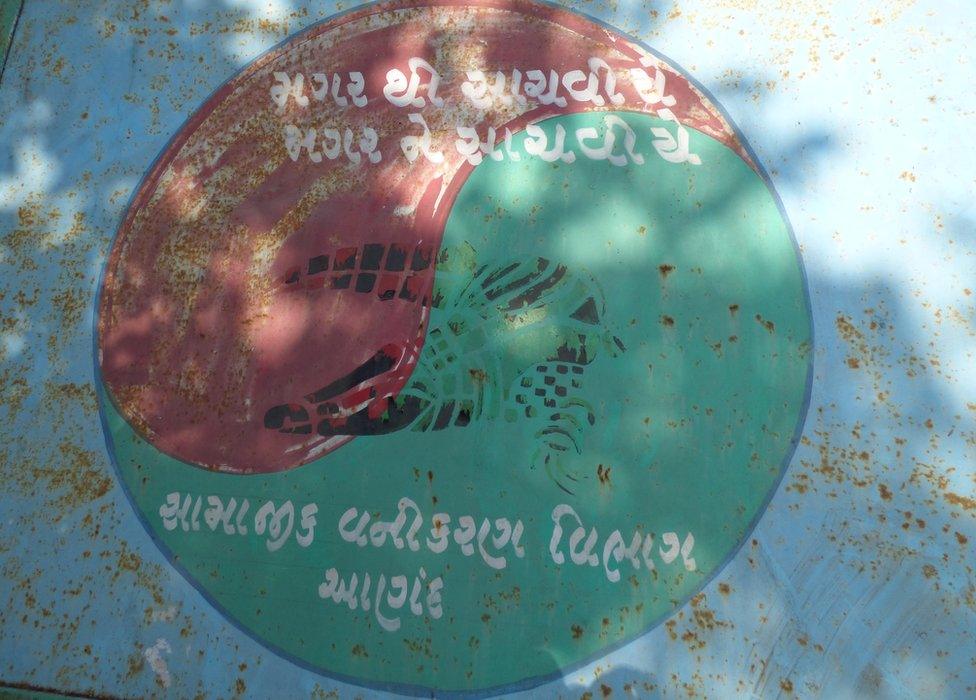
Signboards warn people about the crocodiles
In Malataj, the forest department has built an enclosure close to the bank so people can use the water while staying safe from crocodiles. But the reptiles are harmless, scoff villagers who did not want the structure and refuse to maintain it.
Several gaps in the fencing could easily allow a stealthy predator to grab an arm or leg. But the muggers ignore the many opportunities every day. Instead, they seem to live up to their human neighbours' expectations and leave them alone.
Locals regularly make excuses for the reptiles.
In the village of Petli for instance, a family living on the edge of a pond lost a goat to muggers. Accepting the loss in his stride, an elderly man said: "It must have belonged to the crocodile. So it took it."

Read more wildlife stories from India

Tunnels dug by the reptiles riddled the bank beside his hut. The crocodiles escape the summer heat in these deep burrows. These excavations sometimes extend beneath roads putting them at risk of collapse. These burrows also pose a threat to houses along the banks - the floor of a house in Malataj recently gave way. Luckily, no-one was injured.
Despite these inconveniences, the Charotaris are proud of their muggers.
Although the village of Deva has the highest number of the reptiles in the area, Malataj insists on branding itself the "village of crocodiles".
Residents have conducted a funeral for a dead mugger and built a shrine to goddess Khodiyar - a local deity who is depicted standing beside a bejewelled crocodile- behind the now defunct enclosure. Colourful images of her grace the doorways of many houses in Malataj.
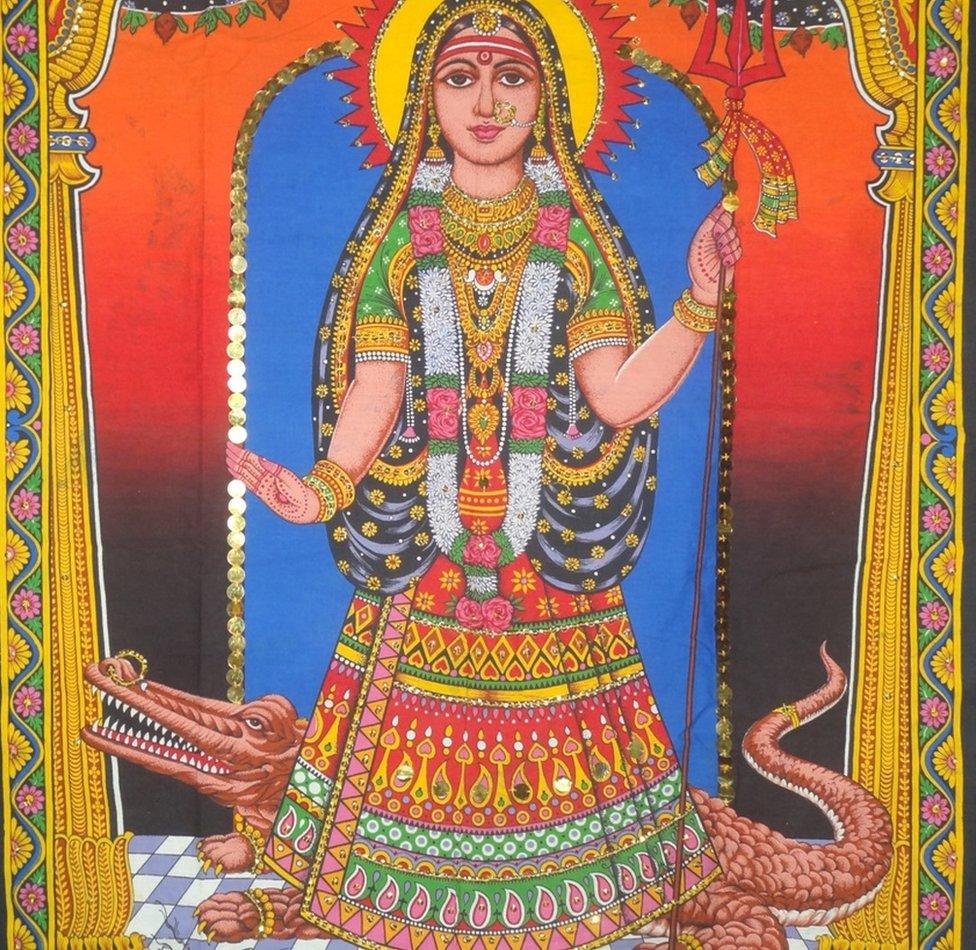
Goddess Khodiyar is a local deity
To assume the goddess is the reason for the charming amiability between people and reptiles in these parts would be simplistic. In surveys, many residents profess to liking the animals. Durgeshbhai Patel, the village chief, even said they plan to excavate another pond so the muggers have more space.
As the sun burnt through the morning chill, the crocodiles hauled themselves out of the water to bask. I counted a dozen, but there were many more I could spot in the distance.
Passers-by crowded around a vendor of hot fenugreek bhajiyas, a batter-fried snack, on a bridge outside Malataj. Below, in a dry overgrown canal, a mugger crocodile lay half-way out of its tunnel, absorbing the sun's rays.
Nobody reacted. It was just another day in their lives.
- Published12 August 2017

- Published16 February 2018

- Published25 September 2018

- Published16 November 2017
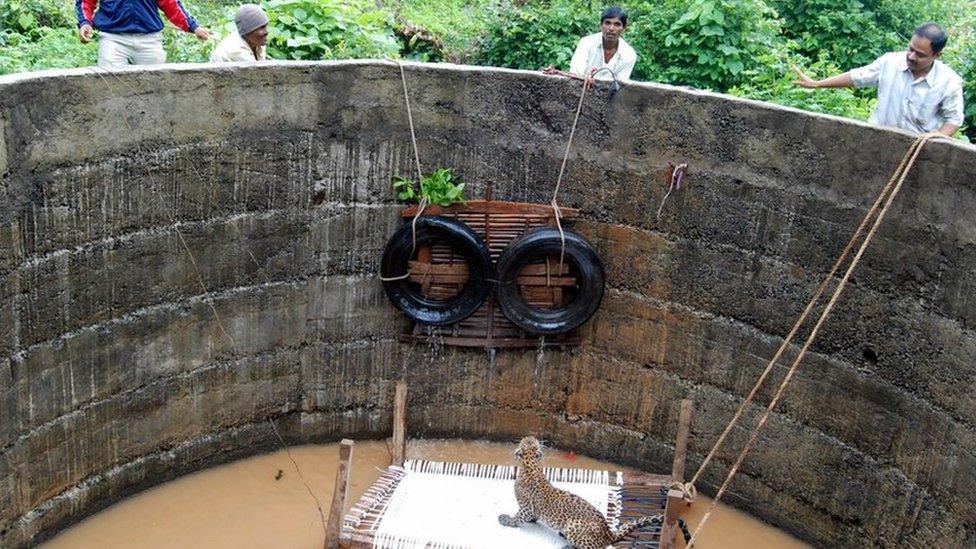
- Published6 November 2018